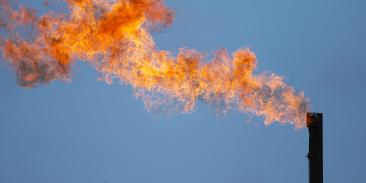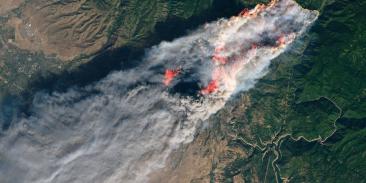Global Warming Threatens Future U.S. Crops
(28 October 2002) A team of scientists, including researchers from Columbia University, the NASA-Goddard Institute for Space Studies (GISS), the Department of Energy’s Lawrence Berkeley National Laboratory, and Environmental Defense have found that increased flooding, an expected outcome of climate change, may cause a doubling in losses of agricultural production over the next 30 years, which could cost U.S. agriculture $3 billion per year. The findings were published earlier this month in the journal Global Environmental Change.
“The Federal Crop Insurance Corporation paid out $21 billion between 1981 and 2000,” said Evan Mills, a scientist in Berkeley Lab’s Environmental Energy Technologies Division, and a co-author of the paper. “Unless greenhouse gas pollution is brought under control, damage to crops from flooding will probably escalate, raising payments from government insurance programs and lowering the reliability of the U.S. crop supply. Action taken to slow global warming will protect U.S. farmers and agriculture, as well as taxpayers.”
“Extreme precipitation events and total annual precipitation in the U.S. have increased over the last 100 years, especially the last two decades,” said Janine Bloomfield, an Environmental Defense senior scientist and a co-author of the report. “Aggressive action to slow climate change must be taken now to lessen the risk of increased flooding over agricultural areas in the United States and the significant increases in crop damage and economic losses that could result.”
The study modifies a standard crop model called CERES-Maize to simulate yields under projected future climate conditions of heavier rainfall and shows that damage due to excessive soil moisture alone is likely to significantly increase crop production losses compared to present levels. Heavy downpours increase the risk of plant disease and insect infestation and cause delays in planting and harvesting. Additional negative effects, such as direct physical damage to crop plants from heavy rains and hail, were not estimated in this study. Corn production in Kansas, Nebraska, Illinois, Indiana, Iowa, North and South Dakota, Ohio and Wisconsin were examined in the study.
With more than 3 million members, Environmental Defense Fund creates transformational solutions to the most serious environmental problems. To do so, EDF links science, economics, law, and innovative private-sector partnerships to turn solutions into action. edf.org
Latest press releases
-
U.S. Withdrawal from UNFCCC, IPCC, and More Vital International Agreements Undermines U.S. Global Standing and Economic Edge
January 7, 2026 -
New EDF Report Shows Electric Vehicle Policy Progress Across All 50 U.S. States
January 7, 2026 -
Trump Administration Announces Unlawful Offshore Wind Halt
December 22, 2025 -
Governor Hochul Repeals "100-Foot Rule," Accelerating New York's Clean Energy Future
December 19, 2025 -
Colorado Air Regulators Approve Landfill Methane Standards
December 18, 2025 -
Proposal Would Guarantee Public Access to Air Quality Data
December 18, 2025










